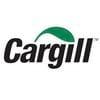Use of glutaraldehyde in the disinfection of incubators
Published: October 20, 2011
By: Debora Takahashi1 & Claudio Fava2 - 1 Dow Microbial Control, São Paulo, Brasil; 2 Dow Microbial Control, Illinois, USA.
Summary
Microbial contamination on the shell surface of hatching eggs is often a source of infection, and a biocide that controls these microorganisms without affecting the live chick embryo is necessary. Glutaraldehyde is a biocide with broad spectrum of action, non-corrosive and biodegradable. Its effectiveness was evaluated in a field study, after disinfection with a synergistic blend of glutaraldehyde and quaternary ammonium compound and a glutaraldehyde-based disinfectant from the U.S. market. The results show a superior effect of the synergistic blend of glutaraldehyde and quaternary ammonium.
Key Words: Contamination, Disinfection, Glutaraldehyde, Bactericide, Virucide.
Introduction
Microbial contamination on the surface of the hatcheries is a frequent source of infections for the animals (Wright and Andersen, 1959). A biocide that controls these microorganisms without affecting the embryo is of great importance. Even though fumigation with formaldehyde has been successfully used for this purpose (Lancaster and Crabb, 1953; Proudfoot and Stuart, 1970), the gases of this compound are a risk for the health of the users, and they also have a very long residual effect (Harry, 1954). Glutaraldehyde is an alternate compound known to be effective against Gram negative and Gram positive bacteria, bacterial spores, virus and some fungi. A disinfectant with glutaraldehyde plus a mixture of glutaraldehyde and quaternary ammonium was tested as egg disinfectant in hatcheries, showing to be effective. The efficacy of the disinfectant with glutaraldehyde and quaternariy ammonium (Ucarsan®) was also studied against endemic microorganisms of the poultry industry. A typical dose was effective against many types of microorganisms found in the chicken and hog production plants ((La Marre and Martin, 1989).
A 1989 patent (US Patent 4800235, "Synergic biocide of 1,5-pentanedial and a mixture of n-alkyl dimetyl benzyl ammonium chloride and n-dialkyl methyl benzyl ammonium chloride") described the synergic composition of glutaraldehyde and benzalconium chlorhidrate to treat water in industrial processes to prevent the growth of Gram negative bacteria and fungi (La Marre and Martin, 1989). Data used to support this patent confirm the synergy of glutaraldehyde with quaternary ammonium, as the mixture of these two active ingredients increases almost 10 fold the effectiveness against bacteria and fungi when compared with the isolated biocides.
Besides the wide spectrum action of glutaraldehyde, this active compound is not carcinogenic and does not irritate the skin at the concentrations used. Another characteristic is that it has the potential of being biodegradable therefore it does not contribute to the contamination of the soil and rain waters when it is used at the farms and wasted into the environment. Furthermore, glutaraldehyde is not corrosive and therefore it has no effect on the metallic material of hatcheries and farms.
Glutaraldehyde was tested against many microorganisms that can cause diseases in animals, such as virus: H1N1, SARS, Avian influenza, etc. Bacteria: Salmonella, Mycoplasma, the germ causing the Avian Tuberculosis and fungi: Aspergillus. The effectiveness of a synergic mixture of glutaraldehyde and quaternary ammonium (Ucarsan) was evaluated in this study, through field tests in various incubator plants.
Material and Methods
Samples were collected in an incubator and these samples were divided in two parts: A and B. In part A, the synergic mixture of glutaraldehyde and quaternary ammonium (Ucarsan) was applied and in area B a commercial product formed by 7% glutaraldehyde and 26% quaternary ammonium was applied. Both products were applied at the same concentration (7.5 g/l).
During two months, weekly samples were taken using swabs before and after (30 minutes) the application of the disinfectant (7 days after). Samples were taken from the wall, ceiling, fan, sprayer and door, to obtain a total of 280 samples.
Counts of bacteria and fungi were done in the collected samples. The bacteria were sown in tripticasa soybean agar (TSA) and the fungi in sabouraud dextrose agar (SDA) and both were incubated at 30°C. for 72 hours.
The samples were classified according with the level of contamination found in them, using the following identification: Light (0-9 colony forming units [CFU]), Moderate (10-99 CFU) and Heavy (>100 CFU)
Results and Discussion
The level of bacterial contamination found in the samples of the hatchery 1 (area A) are shown in Table 1.
The number of samples with level of contamination classified as Heavy in the samples taken before the application of the disinfectant was of 180, whereas after the disinfection with the synergic mixture of glutaraldehyde and Quaternary ammonium (Ucarsan®), was of 64, showing a 64% reduction of the samples with high index of contamination in area A.
When we evaluate the effect in area B (Table 2) before the disinfection, the number of samples with high level of contamination was 197, whereas after the treatment with the disinfectant with glutaraldehyde (7%) + quaternary ammonium (26%) was 122, showing a lower reduction in the samples with high index of contamination, only 38%.
When we evaluate the level of contamination with fungi found in samples of incubator 1, area A (Table 3), we verify that few samples show high levels of contamination by fungi, only 9 before the application of the disinfectant Ucarsan® and 4 after the disinfection, obtaining a 56% reduction. In the area B, before the application of the commercial disinfectant (glutaraldehyde 7% + quaternary ammonium 26%) only 3 samples with high mycotic contamination were found, obtaining a 33% reduction and only two samples presented a high level of contamination.
Glutaraldehyde is a potent active ingredient and with a wide spectrum that includes bacteria, fungi and mainly virus, that can be used to disinfect farms. It is not an oxidant, contrary to what happens with other oxidizing active ingredients as the chloride agents. Also it is not corrosive. It is considered to biodegradate very fast and it is not bioaccumulative (La Marre y Martin, 1989).
The synergy of the glutaraldehyde with the quaternary ammonium and the higher concentration of the active (42%) in the product Ucarsan®, made this one to be more effective than the other disinfectant tested (glutaraldehyde 42% + quaternary ammonium 7%), mainly against bacteria.
Table 1. Level of contamination of the swabs collected in incubator 1 (area A). Before (A) and after (B) of the application of the disinfectant Ucarsan ® (glutaraldehyde 42% + quaternary ammonium 7%)
|
Bacteria
|
A) Before the Disinfection
|
B) After the Disinfection with Ucarsan®
|
||||
|
Week
|
Low
|
Mean
|
High
|
Low
|
Mean
|
High
|
|
1
|
10
|
0
|
0
|
10
|
0
|
0
|
|
2
|
20
|
0
|
12
|
29
|
1
|
2
|
|
3
|
16
|
2
|
16
|
31
|
2
|
1
|
|
4
|
7
|
0
|
27
|
21
|
3
|
10
|
|
5
|
2
|
0
|
32
|
21
|
1
|
12
|
|
6
|
6
|
1
|
27
|
24
|
1
|
9
|
|
7
|
4
|
1
|
29
|
22
|
2
|
10
|
|
8
|
11
|
0
|
23
|
22
|
0
|
12
|
|
9
|
19
|
1
|
14
|
25
|
1
|
8
|
|
TOTAL
|
95
|
5
|
180
|
205
|
11
|
64
|
Table 2. Level of contamination with bacteria on the swabs collected in the incubator 1 (area B), before (A) and after (B) of the application of the commercial disinfectant (glutaraldehyde 7% +Quat. Amm. 26%)
|
Bacteria
|
A) Before the Disinfection
|
B) After the Disinfection with Ucarsan®
|
||||
|
Week
|
Low
|
Mean
|
High
|
Low
|
Mean
|
High
|
|
1
|
1
|
0
|
9
|
7
|
1
|
2
|
|
2
|
8
|
2
|
22
|
19
|
1
|
12
|
|
3
|
9
|
0
|
25
|
19
|
4
|
11
|
|
4
|
8
|
0
|
26
|
20
|
1
|
13
|
|
5
|
2
|
2
|
30
|
12
|
2
|
20
|
|
6
|
5
|
0
|
29
|
10
|
1
|
23
|
|
7
|
4
|
1
|
12
|
6
|
0
|
11
|
|
8
|
6
|
0
|
28
|
11
|
0
|
23
|
|
9
|
6
|
2
|
16
|
15
|
2
|
7
|
|
TOTAL
|
49
|
7
|
197
|
119
|
12
|
122
|
Table 3. Level of contamination with fungi on the swabs collected in the incubator 1 (area A): before (A) and after (B) the disinfection with Ucarsan® (glutaraldehyde 42% + quaternary ammonium 7%)
|
Bacteria
|
A) Before the Disinfection
|
B) After the Disinfection with Ucarsan®
|
||||
|
Week
|
Low
|
Mean
|
High
|
Low
|
Mean
|
High
|
|
1
|
10
|
0
|
0
|
10
|
0
|
0
|
|
2
|
30
|
0
|
2
|
32
|
0
|
0
|
|
3
|
34
|
0
|
0
|
34
|
0
|
0
|
|
4
|
34
|
0
|
0
|
34
|
0
|
0
|
|
5
|
32
|
0
|
2
|
34
|
0
|
0
|
|
6
|
33
|
0
|
1
|
33
|
1
|
0
|
|
7
|
32
|
0
|
2
|
30
|
1
|
3
|
|
8
|
33
|
0
|
1
|
33
|
0
|
1
|
|
9
|
33
|
0
|
1
|
33
|
1
|
0
|
|
TOTAL
|
271
|
0
|
9
|
273
|
3
|
4
|
Table 4. Level of contamination with fungi on the swabs collected in the incubator 1 (area A): before (A) and after (B) the application of the commercial disinfectant (glutaraldehyde 7% + ammonium quaternary 26%)
|
Fungi
|
A) Before the Disinfection
|
B) After the Disinfection with the mixture of Glutaraldehyde
|
||||
|
Week
|
Low
|
Mean
|
High
|
Low
|
Mean
|
High
|
|
1
|
10
|
0
|
0
|
10
|
0
|
0
|
|
2
|
32
|
0
|
0
|
32
|
0
|
0
|
|
3
|
34
|
0
|
0
|
34
|
0
|
0
|
|
4
|
32
|
1
|
1
|
33
|
1
|
0
|
|
5
|
34
|
0
|
0
|
34
|
0
|
0
|
|
6
|
32
|
0
|
2
|
32
|
0
|
2
|
|
7
|
17
|
0
|
0
|
17
|
0
|
0
|
|
8
|
34
|
0
|
0
|
34
|
0
|
0
|
|
9
|
24
|
0
|
0
|
24
|
0
|
0
|
|
TOTAL
|
249
|
1
|
3
|
250
|
1
|
2
|
Conclusions
The synergic mixture of glutaraldehyde with quaternary ammonium (Ucarsan®) was able to reduce de levels of contamination both with bacteria as with fungi in the samples collected in the fields of the treated incubator.
The disinfectant with glutaraldehyde (42%) + quaternary ammonium (7%) can be used in several applications to maintain animal health, as incubators, farms, transportation vehicles, etc., with higher efficacy in the control of contamination caused by bacteria and fungi.
The higher concentration with glutaraldhyde (Ucarsan®) showed higher efficacy in the control of bacteria and fungi, drastically reducing the level of contamination by bacteria in the samples collected in incubator 1.
Besides, glutaraldehyde is non corrosive, it is biodegradable and therefore it can be used to maintain farms with efficacy and without affecting the environment.
Bibliography
Harry EG. 1954. The influence of certain chemicophysical characteristics of formaldehyde on its use as a disinfectant. pp. 217-222. In: Proc. 10th World's Poult. Congr. Edinburgh.
La Marre TM & Martin CH. 1989. Synergistic biocide of 1,5-pentanedial and a mixture of n-alkyl dimethyl benzyl ammonium chloride and n-dialkyl methyl benzyl ammonium chloride. US Patent No. 4800235.
Lancaster JE & Crabb WE. 1953. Studies on disinfection of eggs and incubators. II. The value of formaldehyde gas with particular reference to the concentration resulting from the addition of formalin to potassium permanganate. Br. Vet. J. 190:390-397.
Proudfoot FG & Stuart DKR. 1970. The effect of preincubation furmigation with formaldehyde on the hatchability of chicken eggs. Can. J. Anim. Sci. 50:453-465.
Wright WL, Anderson GW, Epps NA. 1959. Hatchery sanitation. Can. J. Comp. Med. 23:288-290.
Content from the event:
Recommend
Comment
Share

17 de febrero de 2016
Has anyone studied the effects of glutaraldehyde when used in incubators or the hatcher when eggs or hatching chicks are present?
What is the maximum concentration that can be used safely?
Recommend
Reply

Would you like to discuss another topic? Create a new post to engage with experts in the community.







